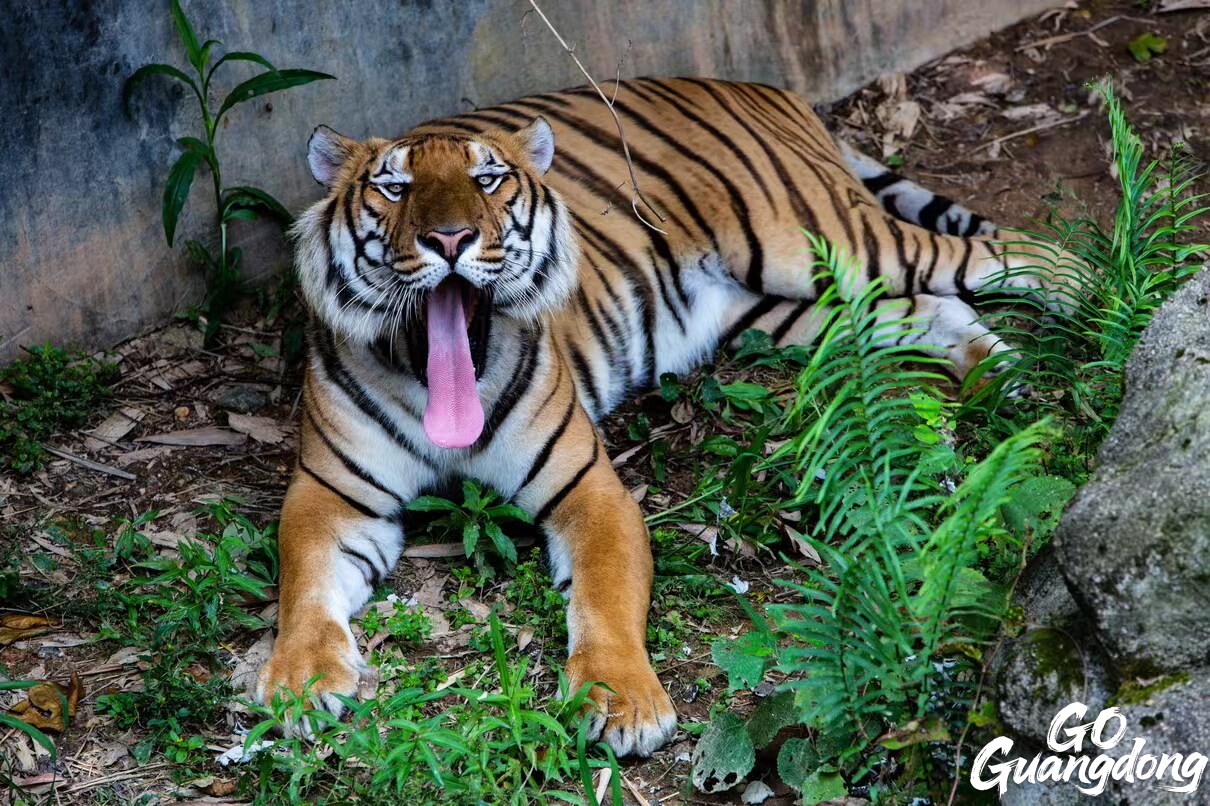
South China tiger
Nestled at the foot of Nanling Mountain, the largest mountain range and a biodiversity hotspot in southern China, Shaoguan's South China Tiger Breeding Base isn't just a sanctuary for one of the earth's rarest predators. It's a living classroom where travelers can witness conservation in action.
Once reduced to fewer than 20 individuals in the wild, China's endemic tigers are now staging a fragile comeback, thanks to a blend of cutting-edge science, relentless conservation, and the unwavering dedication of a team that treats these big cats like family.
Advanced techniques adopted to breed endangered tigers
The South China tiger (Panthera tigris amoyensis) is a subspecies declared "functionally extinct" in the wild by conservationists. It ranks among China's top 10 most endangered species and has fewer than 200 individuals in captivity nationwide.
The Northern Guangdong South China Tiger Provincial Nature Reserve is a wildlife-focused sanctuary located in the Nanling Mountains, renowned for its intact ecosystems. Established under the reserve in 2008, the Shaoguan base spans 200 acres of reconstructed forest ecosystems, making it a major South China tiger breeding facility in China.
Through advanced breeding techniques and cub-rearing protocols, the South China tiger population at the base has surged from a handful of two individuals to a thriving population of 14. In 2021, the base achieved a milestone as a female tiger named Mengmeng gave birth to four cubs in one year, all surviving, which is a national record.
The most challenging aspect of artificially breeding South China tigers is the issues caused by inbreeding. Descended entirely from six wild tigers captured in the 1950s, today's captive population suffers from severe inbreeding, leading to high cub mortality rates and congenital defects.
To combat this, the base has accumulated a series of breeding experiences. Seasonal diets are meticulously calibrated—5 percent of body weight in spring and summer, rising to 8 percent in colder months. Pregnant tigers receive vitamin supplements, while newborn cubs undergo 24-hour monitoring for feeding and waste patterns.
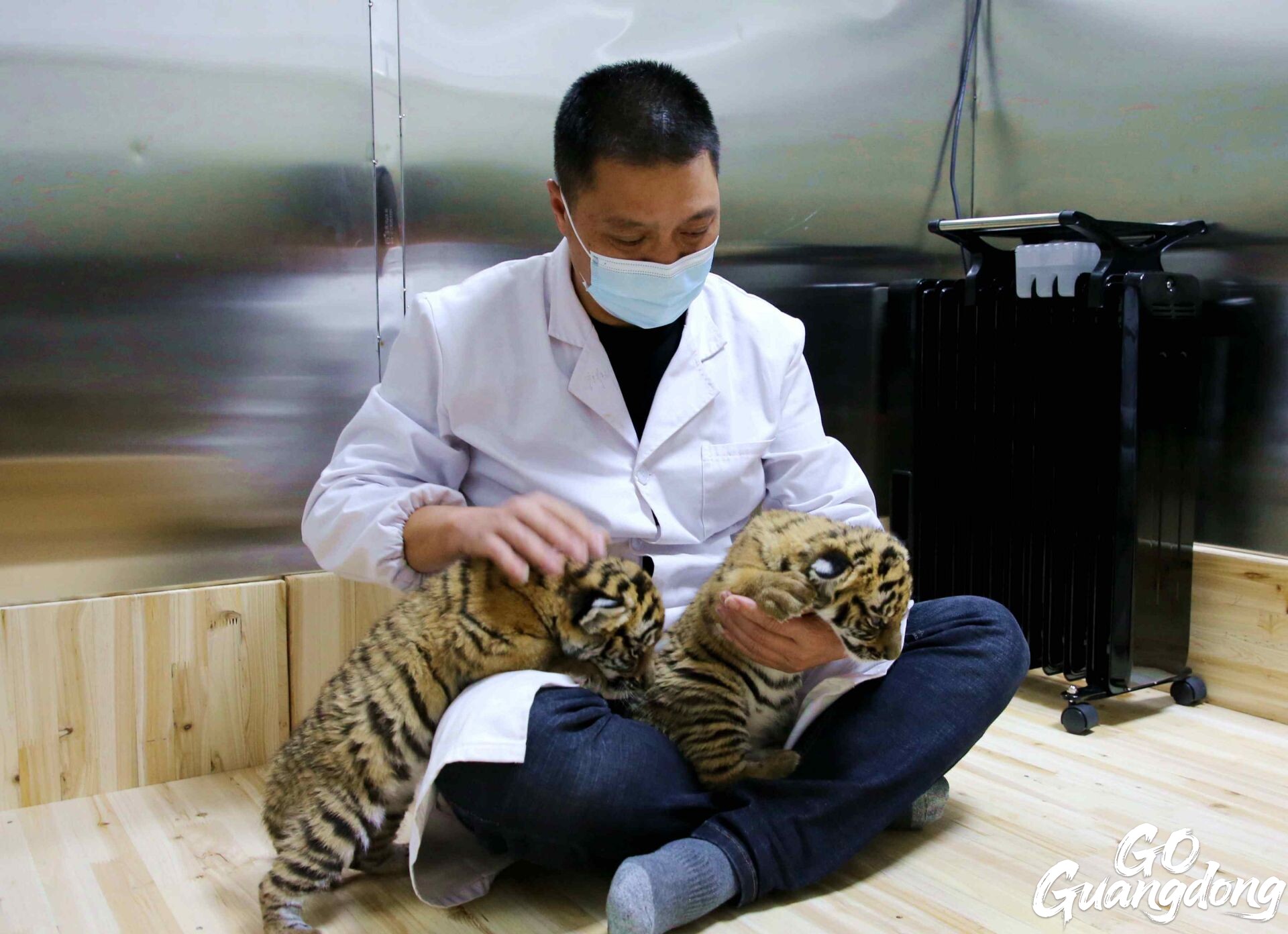
Tiger keeper Lei Shengqiao feeding new born tiger cub. (Photo by Nanfang Daily)
The base's success also hinges on meticulous science. It has significantly enhanced its animal care capabilities in recent years by installing advanced veterinary equipment, including X-ray machines, ultrasound scanners, surgical tables, and specialized treatment cages. Collaborations with Guangzhou Zoo Veterinary Hospital have further strengthened healthcare protocols, enabling regular health checkups and complex surgical procedures for the big cats.
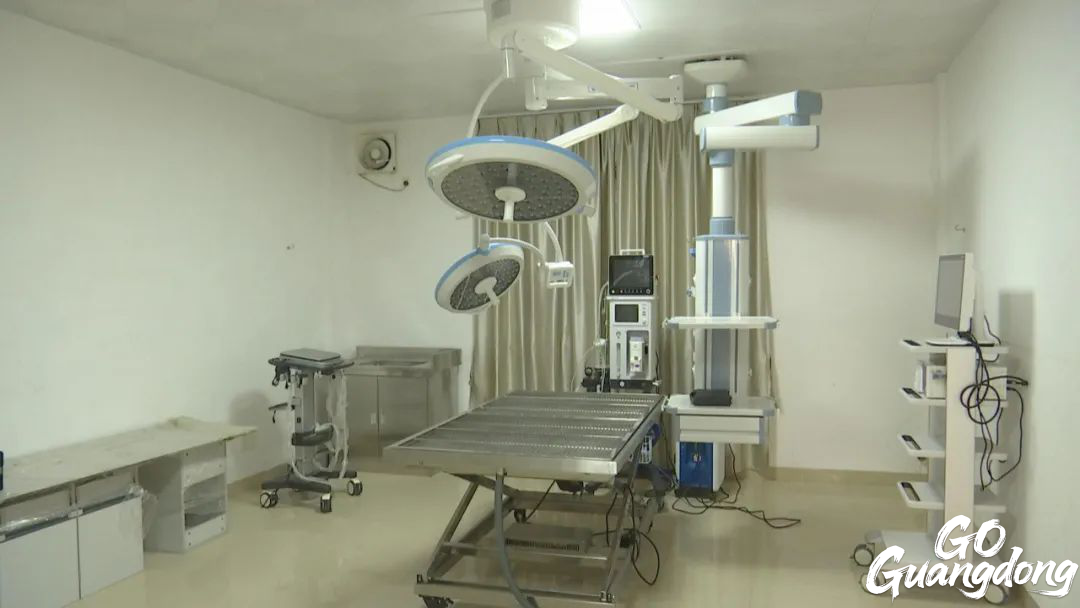
The Shaoguan base is equipped with surgical tables. (Photo by Nanfang Daily)
Rewilding training, a cornerstone of the Shaoguan base
While artificial breeding has brought the critically endangered species back from the brink, the path to restoring these big cats to their natural habitat remains fraught with challenges.
"In semi-feral enclosures spanning 2-3 acres per tiger, each tiger is raised in isolation, with our team working to replicate their natural habitat as closely as possible to preserve their most primal behaviors. For the sub-adult tigers, a dedicated nursery provides a space for them to engage in age-appropriate activities," said Lei Shengqiao, a veteran keeper who has been dedicated to raising tigers in the Shaoguan base since 2008.
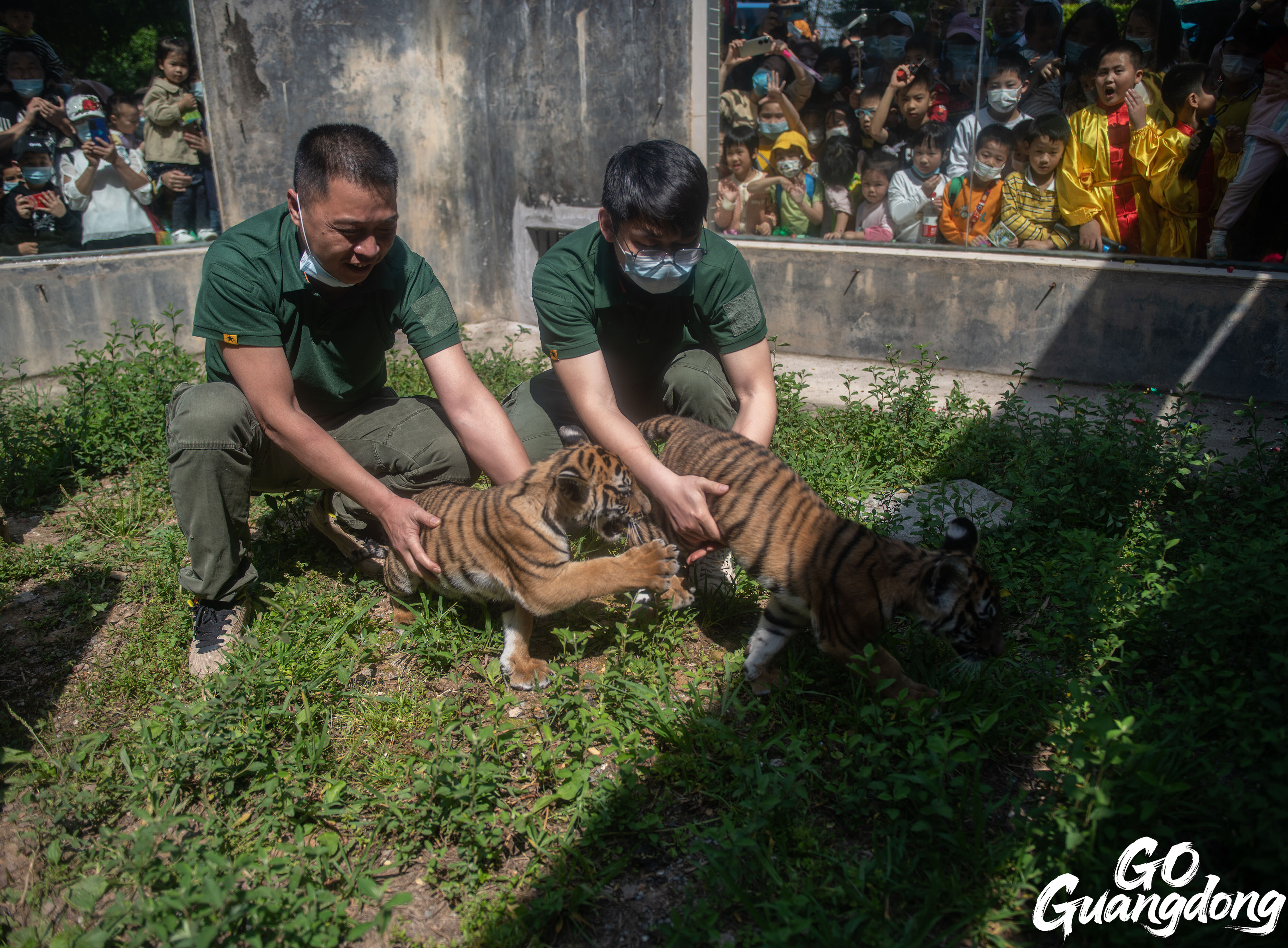
Tiger keeper Lei Shengqiao (L) with tiger cubs (Photo by 韶关发布)
Lei notes that when South China tigers reach around one year old, the base introduces live animals such as chickens into their diets. "Take the 2021-born sisters Lianhua and Furong, for example, we tossed live chickens to them, and they chased and bit at them, reacting well. Their natural instincts are still very much intact," he says.
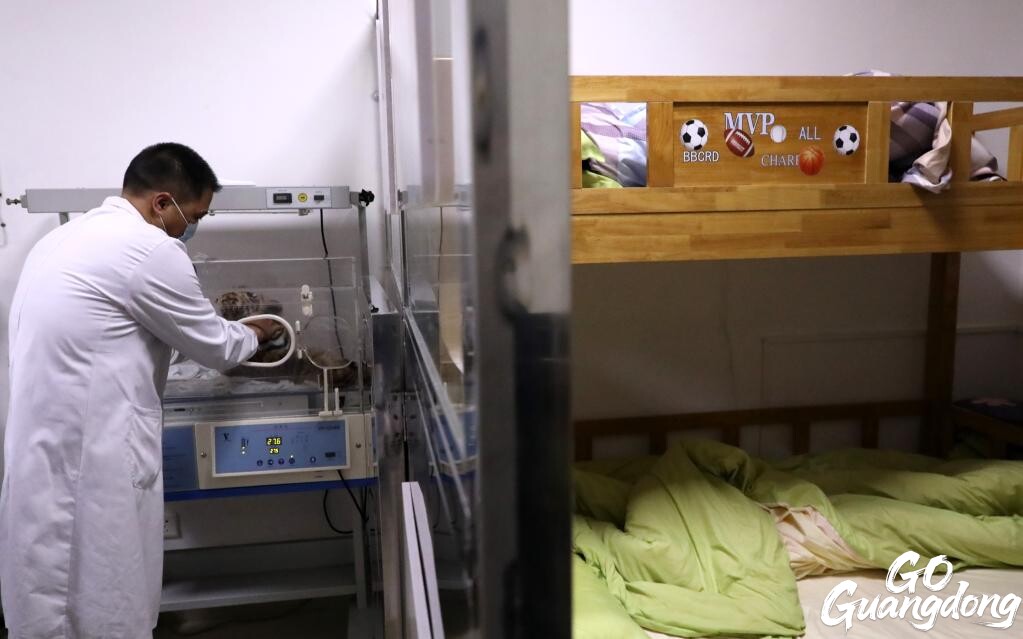
Staff member Lei Shengqiao lives with twin cubs of south China tiger at the research base of south China tiger breeding in Shaoguan City of south China's Guangdong Province, Jan. 20, 2022.(Xinhua/Huang Guobao)
Wildlife experts emphasized that reintroducing South China tigers into the wild involves a three-phase process: population development, rewilding training, and final release. The Shaoguan Forestry Bureau has identified Ruyang Forest Farm as a potential rewilding training site after technical assessments, yet the path forward remains arduous.
However, releasing tigers back into the wild is an extremely lengthy process. Whether they can adapt to the wild environment after release also requires a period of observation. South China tigers raised in human-managed environments have developed a docile temperament, viewing human feeding as their sole food source. Therefore, rewilding training before release is highly necessary.
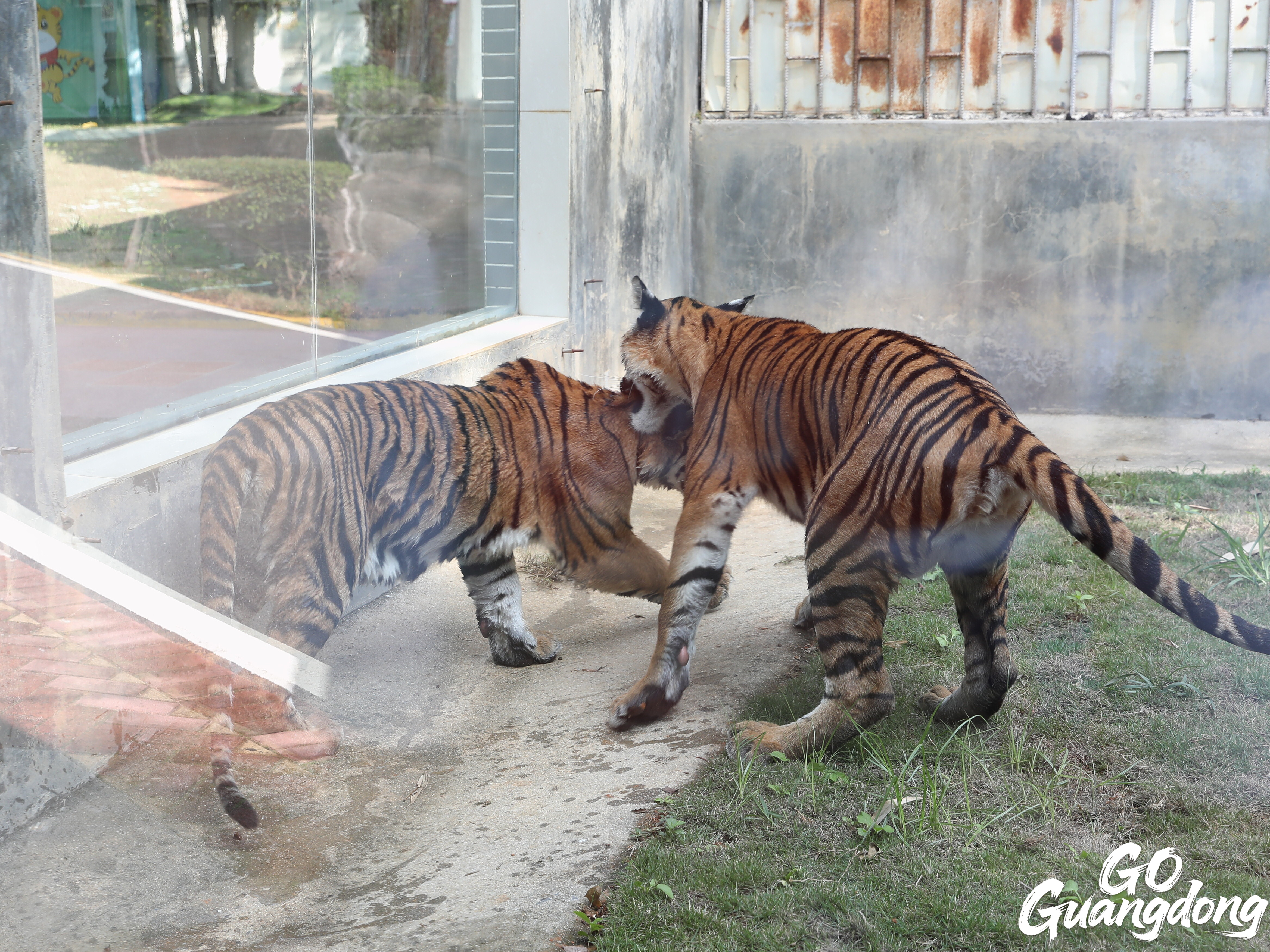
The twin South China tigers in Shaoguan base. (Photo by Nanfang Daily)
More animal species introduced to the Shaoguan base
In addition to its ongoing conservation efforts, the Shaoguan base is introducing new residents: the capybaras, large, semi-aquatic rodents native to South America. To celebrate this addition, the park is launching a "Trendy Wildlife Festival" centered around these charismatic creatures.
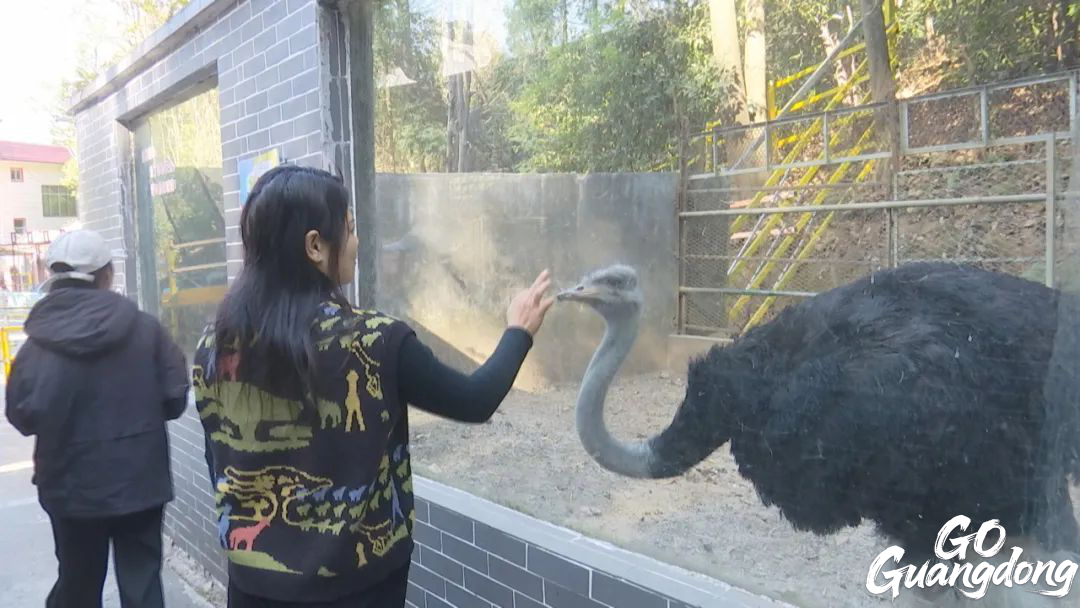
Tourists interacting with different animals during "Trendy Wildlife Festival" (Photo by Nanfang Daily)
According to Base Manager Liu Shuying, the newly renovated Animal Village, which has been already a hub for displaying small animals, raising juvenile wildlife, and hosting interactive feeding sessions, has undergone a comprehensive upgrade starting in early January 2025. The project, reopened to visitors on January 25, aims to enhance both the park's infrastructure and the overall visitor experience.
Post-renovation, the Animal Village now showcases over 20 animal species, including long-time residents and new "neighbors" for the tigers, that is, capybaras, marmots, and meerkats. The village's enclosures have been upgraded with improved ventilation, better natural lighting, and updated facilities, while expanded outdoor play areas allow the animals to freely exhibit their natural behaviors.
Beyond elevating the base's facilities and software operations, this transformation also enriches the visitor experience. By introducing new species and hosting engaging events, such as the Trendy Wildlife Festival, the base expects to draw more visitors and raise greater public awareness, efforts that will ultimately support the protection and breeding of South China tigers, ensuring these critically endangered big cats continue to thrive.
Reported by Yin Juewen
Yu Chenxing also contributed to the report.










